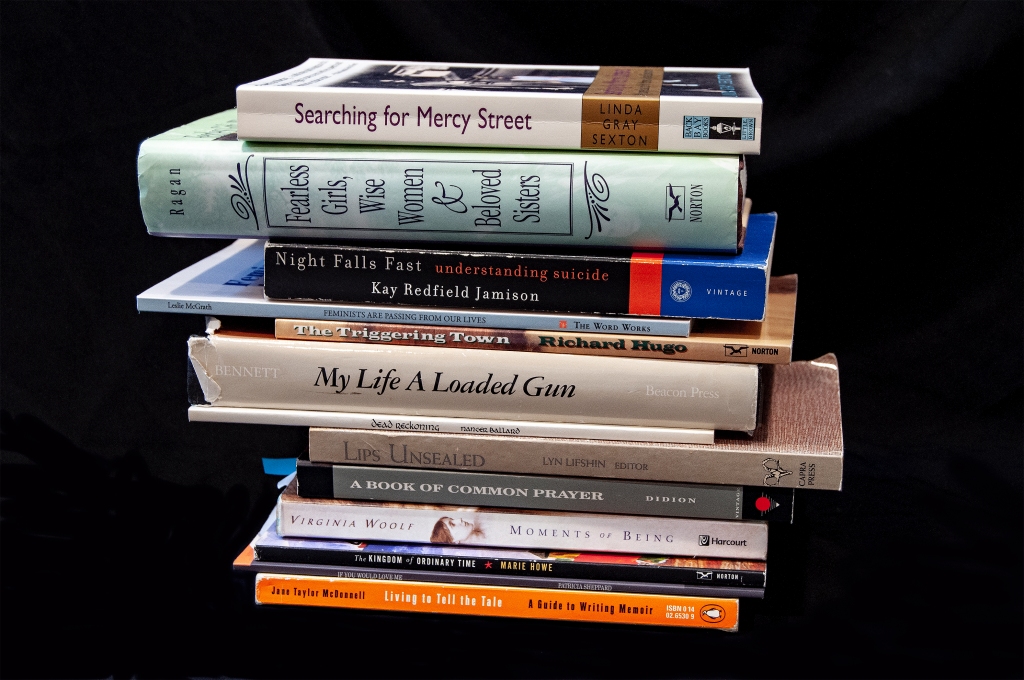Written by Nancer Ballard; ed. assistance by Savannah Jackson.
Stories are powerful ways to engage people, but they are usually a closed system, that is, they have a beginning, middle and end. This is part of a story’s appeal—the reader or viewer expects that whatever dilemmas the protagonist encounters will eventually be resolved physically or psychologically. Stories provide the reader with a sense of hope and completion—even if their own life feels like a tangled mess.

Stories have narrators, but a narrative is different than a story. A single series of events told by narrators with different perspectives makes each rendition of a story feel very different. The narrator’s perspective and motivations, the order in which events are told, and what events are included and excluded from the story shape the narrative and affect how we interpret the characters and events being described.
Narratives can also encompass multiple stories. Multi-story narratives can often be distilled into a single sentence or phrase, such as “The American Dream” or “Black Lives Matter.” Most importantly for our discussion here, multi-story narratives are often open ended—that is, they do not have a final resolution.

In a story or story-bound narrative, the reader enters the story-world by identifying or empathizing with the characters or situation. However, multi-story narratives often include an implicit or explicit invitation for the audience to become personally involved—e.g. to participate– in the narrative and to help determine the outcome of a story propelled by that narrative. For example, “Black Lives Matter” is a declaration about racial injustice, but it’s also a call for the listener to participate in social change.
As we’ve discussed in previous posts, narratives can operate at both personal and social/cultural levels. An example of a social narrative is the colonialist narrative that Indigenous peoples were better off being assimilated into the dominant European-derived culture because their native cultures were regarded as inferior. Another example of a social narrative is the American Dream’s promise that in the United States anyone can succeed if they just work hard enough.

Broad cultural narratives can be true, false, or true in some but not all situations, and they always contain a value-laden message designed to drive attitudes and/or behavior. Individual personal narratives include statements that you repeat to yourself to explain behavior and outcomes in multiple situations such as, “I just didn’t work hard enough,” “Where there’s a will, there’s a way,” “I should have seen it coming,” or “So it goes.”
Personal narratives that are generalized from incident to incident also contain prescriptive messages that can be helpful, harmful, or both. And, of course, personal narratives are influenced by social narratives, and personal stories and personal narratives can become part of group narratives and gradually alter broad social narratives.
In between social/cultural “master” narratives and individual personal narratives are what can be called “group” or “local” narratives. Local narratives interpret contemporary events in light of master narratives and encourage individuals to align their personal narratives with group and master narratives. Such alignment can be a powerful force for social change and/or extremist zealotry.

In Master Narratives of Islamist Extremism, Steven Corman of Arizona State University describes how Islamist extremists used narratives to interpret contemporary events as threats in order to enlist local participation. The extremist narrative was designed to entice Afghan civilians into seeing themselves as defenders of Islam against the international forces assisting the Afghan government, although the international forces were in fact there to provide security against terrorists. The Taliban portrayed international forces as modern-day Crusaders bent on subjugating and exploiting Muslims, and portrayed themselves as champions of ordinary Afghans, in order to encourage Afghans to take up the Taliban’s cause. By encouraging Afghan civilians to align their personal narratives with the Taliban master narrative the Taliban hoped to create the means to expel foreign forces and replace the democratic government with a pro-Taliban Islamic Emirate.

The recently-defeated American President Donald Trump has demonstrated a similar ability to lead a significant percentage of Americans to align their personal frustrations and anger with his narrative. Trump’s social narrative contends that those who disagree with him are “elitists” and socialists who are trying to destroy America. He also claims mainstream journalists who question his misleading statements or false claims are spreading “false news.”

In his narrative trope, the President simultaneously casts himself as the victim of those who challenge his view of himself and as the protector of true patriots. The fact that the President’s policies are often less favorable for his supporters than the policies of the Democrats, and that many of his claims are grounded on implausible or demonstrably false statements is a testament to the power that socially embedded narratives have to drive beliefs and belief systems. People of all political persuasions can interpret facts to fit their narratives rather than change their belief systems to accommodate inconsistent facts. When narratives operate independently of facts or when facts are treated as fuel for a narrative agenda rather than used to test its validity, then prejudice, rigidity of thought, and polarization inevitably follow.
None of us are immune to narratives that are nonsensical or overly simplistic, or not suited to the facts of the situation. What are your personal narratives—those slogans that you find yourself repeating aloud or to yourself? Where did they come from? Do these catch-phrases serve you? Insult you? Or both? Only when narratives arise from a genuine open-minded inquiry into events rather than a pre-determined or pre-loaded interpretation of meaning and motive, do we have a chance to enlarge our understanding of humanity. How do you fight narratives that aren’t supported by facts? We’d love to hear from you.


I am not sure that one can tell if their own narrative is open or close minded. But I would like to add, that I think what people miss about the Donald Trump narrative is that Republicans are choosing to believe the President of the United States, almost every Republican senator, a major news outlet their own spiritual leaders and sometimes governors, and most of the social media they encounter in their travels and possibly many people in their own community. So the fact that these sources validate each other and are the sources one would, in the past, assume to be reliable makes it very difficult for Republicans choosing Donald to evaluate their own narrative. Also, the Trump and Republicans has made this a choice between religion, patriotism, America, catholics, vigilanteism and fake news, which it is not. They insist that it’s either Trump or you are against all these “basic” American values. So in their narrative you need to subscribe fully to be a true American. It’s easy, because they’ve made it simple, it’s all black and white.
LikeLike
Jill, thanks for the comment. Lots of good points here. It is often hard for someone to recognize that they are adopting a narrative rather than an absolute truth. However, it would be dismal to think that one can not ever recognize a false narrative clothed in the garb of patriotism is still a false narrative. I believe the ability to test one’s actual factual experience (as well as access past common sense experience) is key. For example it’s difficult to believe that covid doesn’t exist or isn’t dangerous is someone you know has been very sick or died from it, or if you know a hospital, ambulance driver or other health care worker whom you have believe is credible. At a minimum that puts people in a very intellectually inconsistent position. The election is another example: if you need to believe elections are legitimate in order for a democracy in some form to continue, and you want to credit the outcome of some of the races, it’s difficult to deny the legitimacy of the process– especially if that has been your job for some time. But incoherent thinking can be very tough to disavow, and, as you say, when there are multiple news medias and elected officials spouting the false narrative and people are bombarded with it by emails from a campaign, the sheer repetition tends to make you doubt your own experience/ reality. Looking at international news and at other times in history (your own or world history) can be helpful to gain perspective. And sometimes you just have to be willing to suffer the discomfort of giving up a no-sense thought/narrative/slogan that has served some purpose for you in the past. I believe that part of the purpose served by the Trump false narrative is that one can feel a single person can “take care of you”/”knows what’s best” which simplifies things and — as you say– makes everything right/wrong; good/bad/ patriotic/elitist. In other words simple. When patriotic really means power and ethical behavior is referred to as elitism– the community, large or small is in jeopardy. That’s why it’s so important that those who recognize a false narrative continue to speak out and act for democracy and ethics even when it seems like it’s not doing much good. –Nancer & Savannah
LikeLike
I appreciate your insifhtful distinction between story and narrative.. the last as a multiplicity of threads. Im in the sacred work of naarative repair..evoking and weaving such those that are effective, intentioned from open heart, observing those that are ineffective and learning to discern the difference in the art of reweaving our individual and collective myths. Thank you for your inquiries! I am delighted to find you.
LikeLike